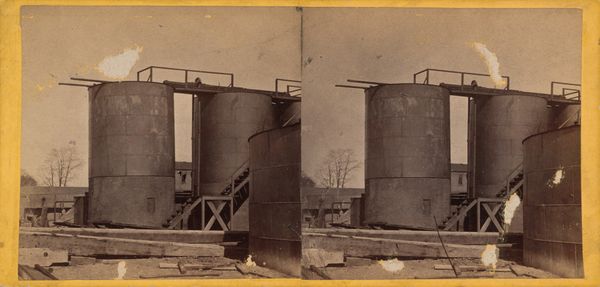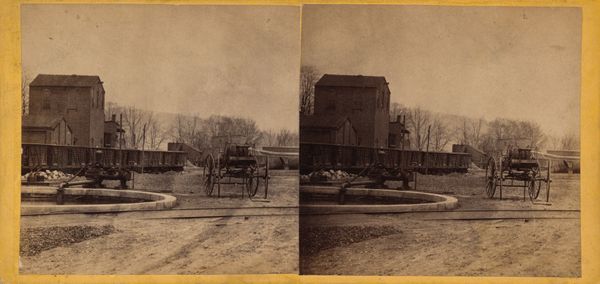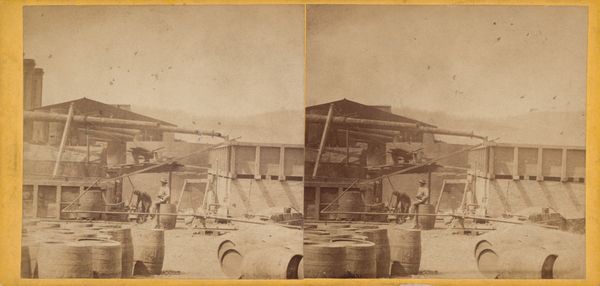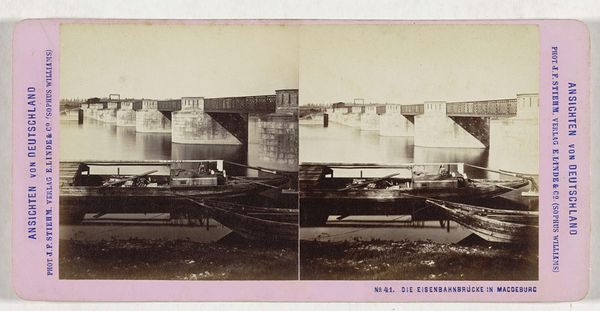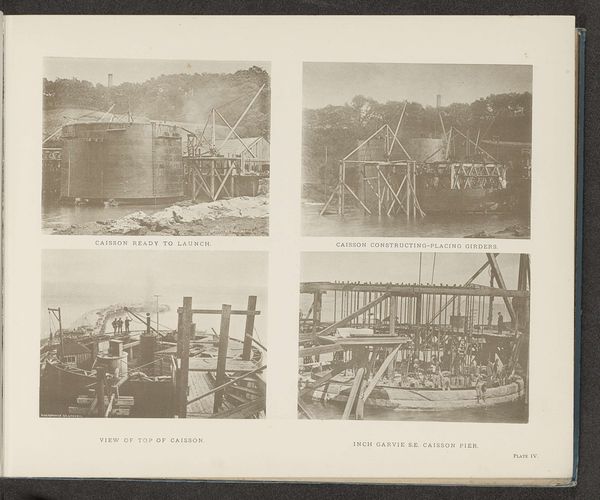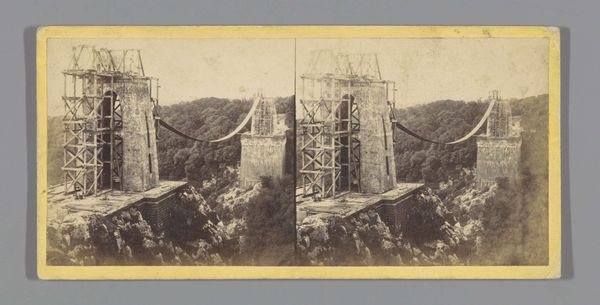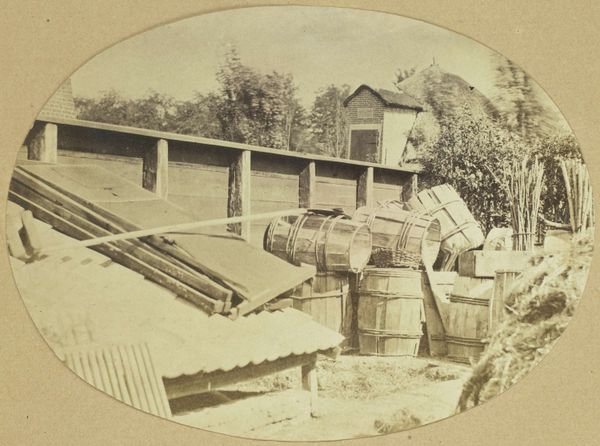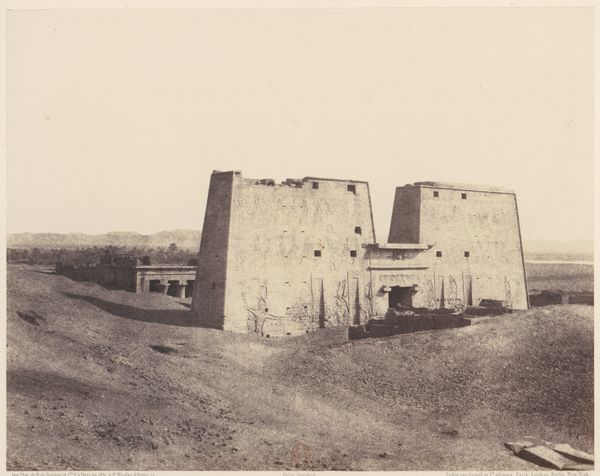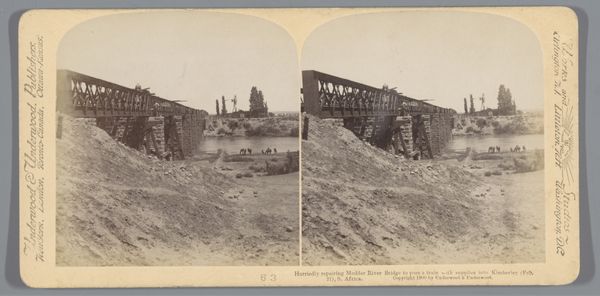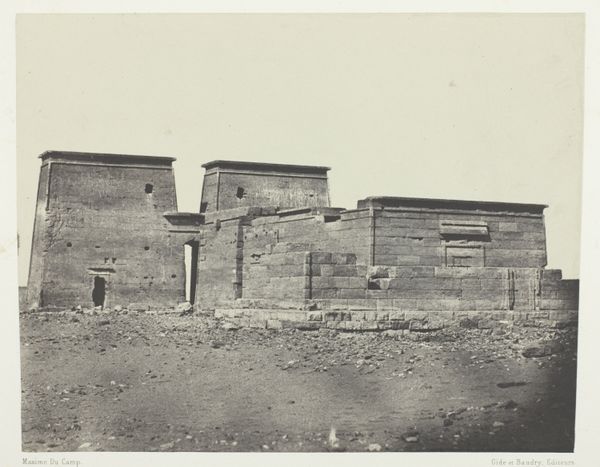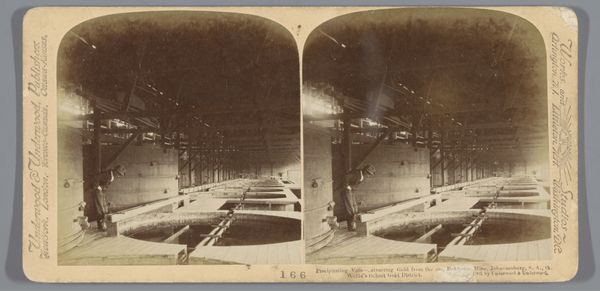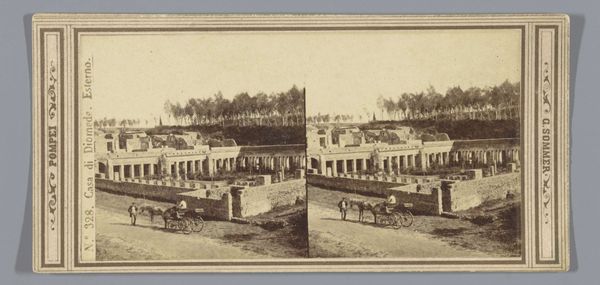
Oil Tanks, Clark & Sumner, Standard Petroleum Refinery, Pittsburg, Pennsylvania c. 1865
0:00
0:00
photography, gelatin-silver-print
#
landscape
#
photography
#
gelatin-silver-print
#
realism
Dimensions: image/sheet: 7.6 × 8 cm (3 × 3 1/8 in.) image/sheet: 7.6 × 7.9 cm (3 × 3 1/8 in.) mount: 8 × 17.1 cm (3 1/8 × 6 3/4 in.)
Copyright: National Gallery of Art: CC0 1.0
Curator: Here we have a gelatin-silver print from around 1865 entitled "Oil Tanks, Clark & Sumner, Standard Petroleum Refinery, Pittsburg, Pennsylvania" by Thomas H. Johnson. What strikes you first about it? Editor: Those hulking cylinders! They feel so ominous, so relentlessly industrial against what looks like a softly rolling hillside. It’s this very strange, slightly menacing feeling, as if nature is holding its breath around them. Curator: Interesting, because the image taps into the visual language of progress and transformation. These oil tanks become almost like new age temples—icons of industry and ingenuity. They really do become these symbols for a changing world, capturing the shift toward mechanized power. Editor: I see that. And the photograph itself – the sepia tones give it a washed-out quality. Makes the tanks feel old, but the ideas they represent—energy, industry, power— are ever present, ever evolving, still shaping our world today. Curator: Exactly. The repetition of the tanks might symbolize both the relentless march of industrialization and, in a Freudian sense, the repression of other historical symbols of energy and fertility. It shows us how human needs and desires get symbolized in different ways throughout time. Editor: It also makes me think of how our perspectives shift, right? We see “landscape photography” now and expect sweeping vistas. But back then, maybe capturing this stark, almost alien scene WAS the new aesthetic of the landscape. Wild. Curator: Precisely! What’s brilliant here is the layering of time and symbol: industrial forms mimicking classical ones, the romantic landscape bending to the will of the machine. These photographs act as vessels of cultural memory. Editor: Yeah. What sticks with me is how Johnson has immortalized this almost brutal transition, leaving us with this ghostly reminder that everything we consider 'progress' leaves something else behind in its shadow. Curator: Absolutely. By imbuing those steel vessels with meaning, Thomas H. Johnson challenges us to remember history's symbolic footprint, as much as its literal one. Editor: Thanks. I think I'll never look at another oil refinery without imagining some ancient cult lurking inside!
Comments
No comments
Be the first to comment and join the conversation on the ultimate creative platform.
